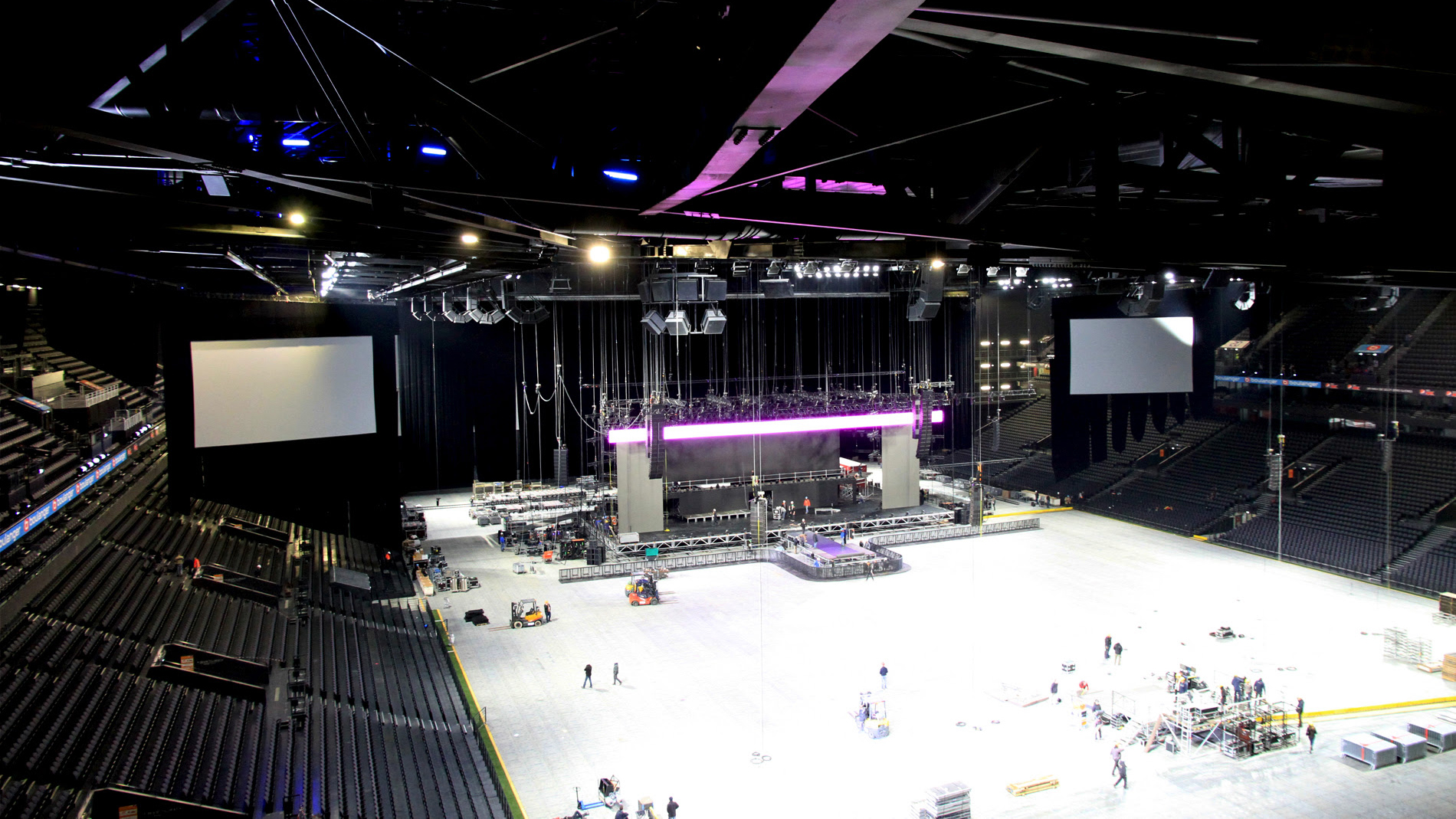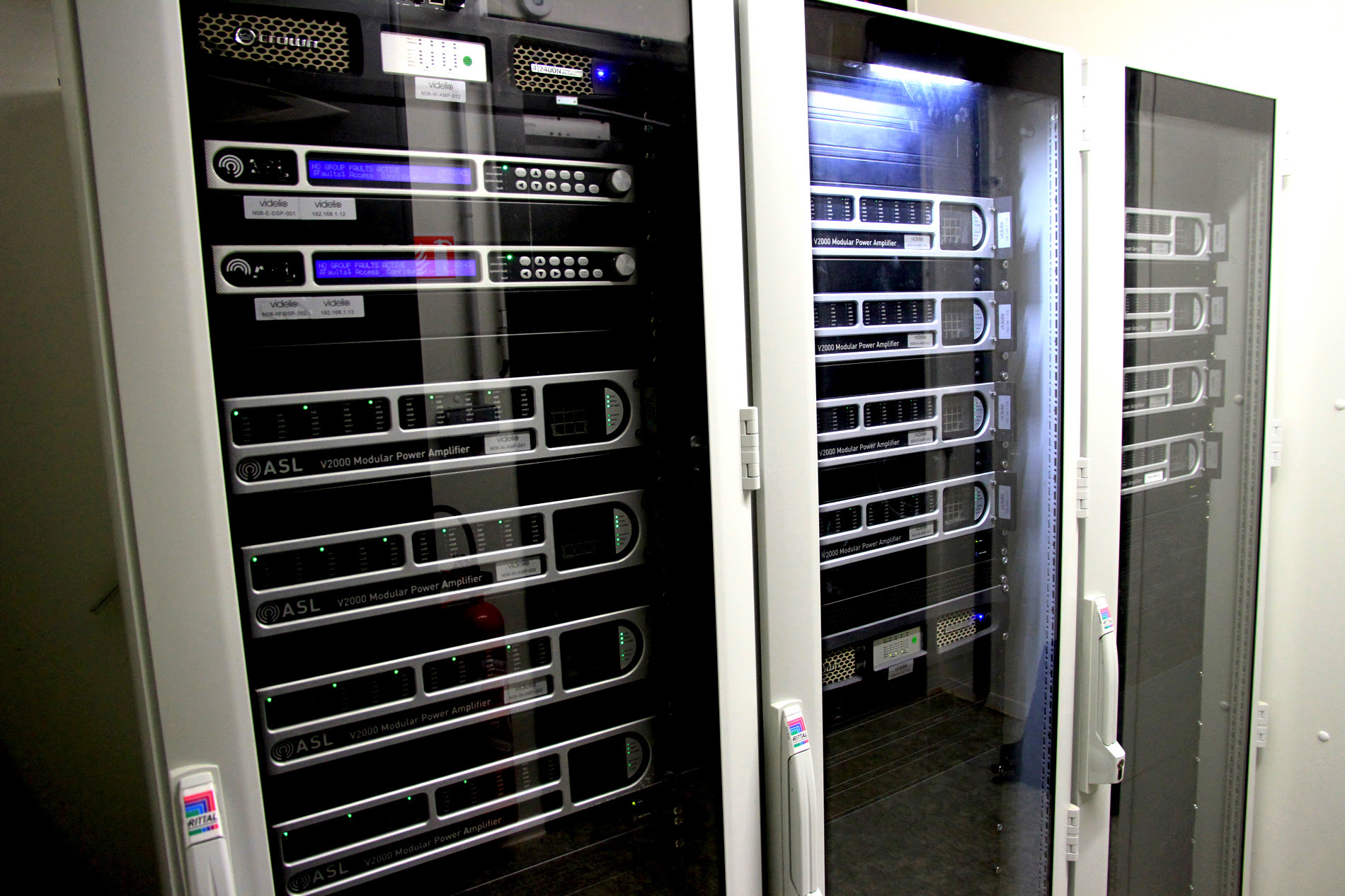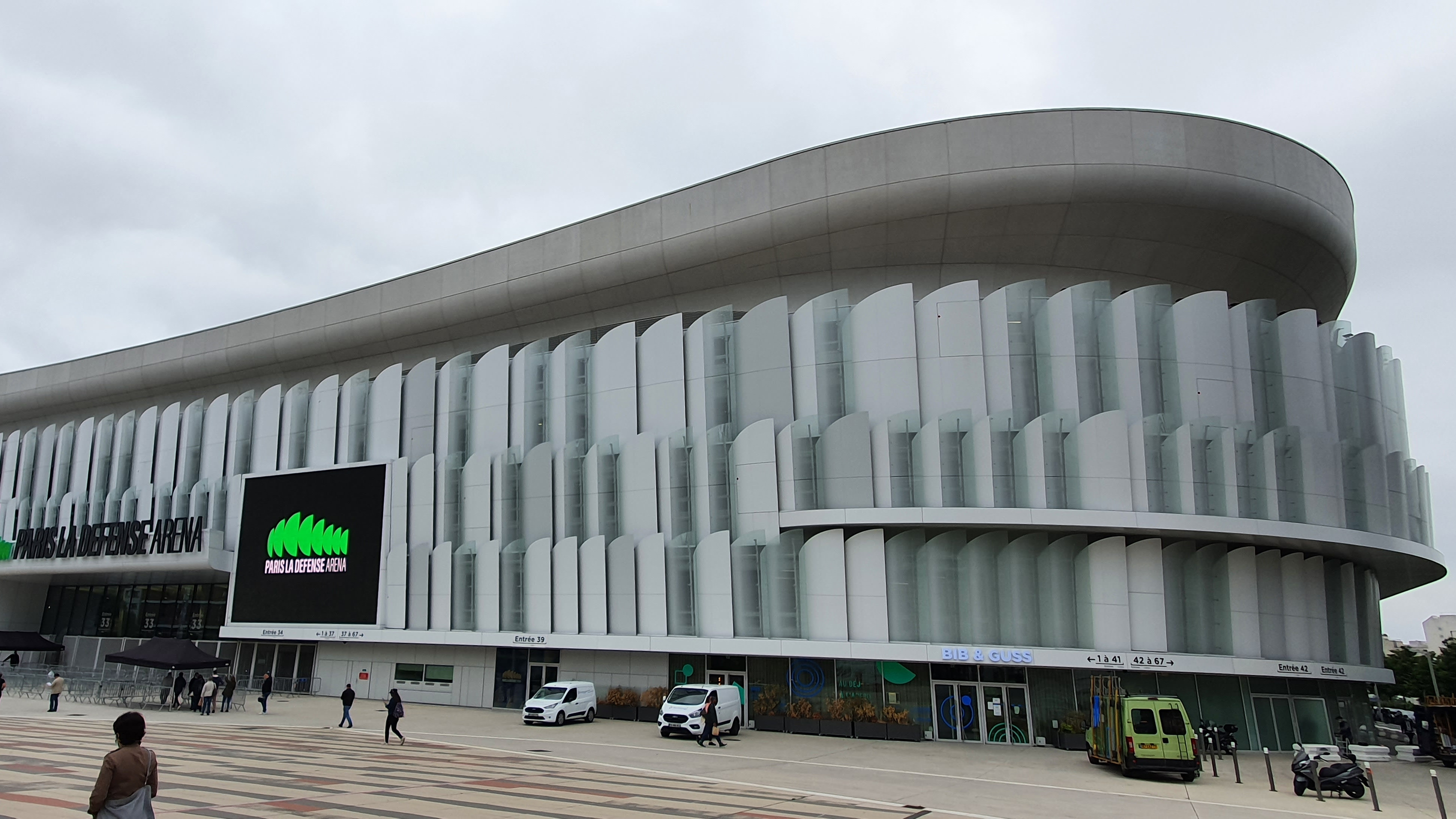Paris La Défense Arena is a 40,000 capacity, multiuse indoor arena located just west of the Paris city center. Opened in December of 2017, the venue truly takes advantage of the “multiuse” component of its design. It has played host to The Rolling Stones, Kendrick Lamar, and Paul McCartney. It hosts rugby matches for France’s national team, and is the home stadium of French rugby union club Racing 92.
The commitment to a multiuse venue requires a unified audio system that sounds great for live performance, offers spoken word intelligibility, and can be relied on in the event of an emergency. The system must adhere to EN 54, a set of European product standards that dictate the performance criteria for a life safety audio system to be used in the event of a fire.
In the past, large arenas have struggled to source a fully EN 54-compliant battery-backed system that also meets their audio performance requirements. The standard solution has been the installation of two separate audio systems—one for the performance, one for life safety—though this setup adds significant extra costs, with complex design and delivery, and increased ongoing maintenance costs.
However, when the Paris La Défense Arena was being designed, the audio designer on the project wanted to see if it was possible to construct a single audio system that would satisfy both the entertainment and life safety requirements.
[ Safe and Sound: The Latest in Mass Notification and Paging Systems ]
“When I first looked at designing the project at the arena, I wanted to find a way to set up one audio system that would work for both the comfort system and the security and safety system,” said Laurent Delenclos, technical director at Freevox, the company that provided the design and integration at Paris La Défense Arena. “Everyone told me that was impossible. But then I found ASL and the solution it offered with integrated Dante, and I realized that yes, this setup could work, and it could work well.”

Combining Two Solutions in One
“ASL’s EN 54 solution performs on all fronts,” said Henry Rawlins, application manager at ASL. “ASL’s VIPEDIA audio controller, with powerful 32-bit internal processing and a full frequency response, combined with ASL’s V2000 amplification provides the required signal-to-noise ratio, low distortion, and high power required to drive the bowl speakers. All of which is complemented by the Dante Brooklyn II module, allowing us to deliver the entertainment element as a ‘layer’ of functionality above and beyond the core EN 54 capabilities. This approach offers both the flexibility demanded by such a venue, and the peace of mind that the emergency functions of the system are not accessible over the open Dante network.”
Audinate’s Dante digital audio networking standard distributes hundreds of uncompressed multichannel digital audio channels via standard Ethernet networks, with near-zero latency and perfect synchronization. Dante allows audio, control, and all other data to coexist effectively on the same network. ASL uses this framework to ensure minimal audio latency between nodes and loudspeaker stacks and allow for connection with Dante-enabled solutions located at front-of-house.
[The Integration Guide to Dante-Enabled AV]
Because Dante allows for high levels of interoperability and is extremely scalable, a solution that leveraged Dante while still providing EN 54 compliance would be a boon for stadiums.
“By merging the comfort system and the emergency system, you immediately see a lot of other benefits, including substantial reductions in both upfront delivery, installation, and ongoing whole life costs,” Rawlins said.

Dante-Backed EN54 Offerings
The distributed audio system at the La Défense Arena consists of five audio nodes, each with a Dante-enabled ASL VIPEDIA-12-PRO audio controller providing the required DSP, audio routing, and monitoring for the more than 60 separate P.A. zones. All of the VIPEDIAs are networked using both ASL’s EN 54-compliant SecureLoop IP technology and with Dante. This provides EN 54 networking with time-synchronized comfort audio and a seamless connection to front-of-house devices and non-emergency active subs.
Connected to the VIPEDIA audio controllers are a number of ASL EMS emergency microphones and 22 ASL V2000 amplifier mainframes, housing more than 100 hot-swappable ASL D500 amplifier modules. The amplifiers drive both the high-performance point-array loudspeakers in the arena bowl and drive back of house 100V ceiling loudspeakers. All of the speakers are certified to EN 54-24.
“The end result is a powerful hybrid of EN 54 and Dante for a multiuser, cross-platform solution that removes the boundaries between what have previously been two separate systems, without compromising on either performance or safety,” Rawlins said.
The Dante functionality also allows for dovetailed connections with the many Dante-enabled devices on the market—from mixing consoles to loudspeakers, or to legacy devices connected to the Dante network via adapters—all configured via a common and recognizable interface.
No Longer Impossible
By using Dante connectivity and ASL solutions, Delenclos was able to prove the setup he envisioned was far from impossible. “The audio is clear anywhere you are located in the arena,” Delenclos said. “With Dante, we see minimal latency across the arena, and it also works with third-party Dante-enabled equipment, while ASL ensures everything remains EN 54 compliant. Due to the huge success at this site, this solution has now been modeled out at a number of sites and we hope that we have changed the way people think.”
Related Stories
What’s Next for Mass Notification Systems? • Mass notification technologies are more prevalent than ever, from traditional emergency response systems to smart gunfire detection and the latest cloud-based solutions.
Safe and Sound: The Latest in Mass Notification and Paging Systems • The need for robust facility- and campus-wide public safety and paging systems has never been greater. Is your system up to the task?
VA and PA: Changing Attitudes, New Technologies • Some technologies can become typecast in one role and rarely fulfill their potential. Public address and voice alarm have both been misunderstood and underused, but changing attitudes and new technologies have led to a reappraisal of both sectors.
